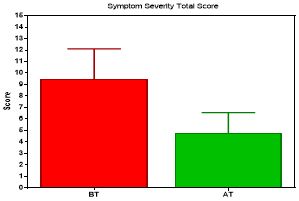Clinical efficacy of Rajanyadi Choornam in Allergic Respiratory Disease in Children
DOI:
https://doi.org/10.21760/jaims.8.3.1Keywords:
Allergic Respiratory Disease, AEC, Rajanyadi Choornam, Serum IgEAbstract
Allergic Respiratory Disease (ARD) is a frequent atopic condition manifesting through allergic rhino conjunctivitis and asthma, affecting up to 40% of the population world-wide. Though not viewed as a life-threatening condition, it is also recognized to impose a significant burden to the quality of life of sufferers and their caretakers. It is apparent from epidemiology studies that the Allergic Respiratory Disease in younger children below the age of 5 years is a relatively common problem. Many conventional managements provide only symptomatic relief resulting in recurrence of the disease. At the same time Ayurveda, aims at the elimination of the disease from its root cause rather than providing only a symptomatic relief that may cause recurrence of the condition. Rajanyadi Choornam is one such herbal formulation mentioned in the classics which would enhance the status of digestive fire (Grahani Deepanam Sreshtam) and helps in proper channelization of Vata (Vataanulomana), providing considerable relief to symptoms. A total of 32 children of age group 2-5 years satisfying the inclusion criteria were included in the study. The participants were given Rajanyadi Choornam in a dose of 2.5 gm twice daily with 5 ml of Madhu and Ghritam taken in unequal quantities. The severity of clinical symptoms and blood parameters (serum IgE, AEC) were assessed after 45 days of intervention. For clinical evaluation data regarding the severity of symptoms were collected and laboratory investigations like Serum Total IgE, AEC were done in the children both before and after drug intervention. The results were analysed statistically and reduction of symptoms was statistically significant.
Downloads
References
Sngonzález díazaarias cruzcmacouzet sánchezabpartida ortega. Impact of air pollution in respiratory allergic diseases. Medicina Universitaria. October–December 2016,;Volume 18( Issue 73 ): Pages 212-215 – science direct.
Robert m kliegman, Richard e behrman, Hal b jenson, Bonita f stanton. Nelson Textbook Of Pediatrics. 18 ed.). Philadelphia: Elsevier; 2008.chapter 142 page no 949
Zave chad. Allergies in children. Paediatr Child Healthv6(8). 2010;6(8)
Vridha Jeevaka, Kasyapa Samhita or Vrddhajivakiya Tantra khila sthana, text with English translation by P.V.Tewari, Chaukambha Visva bharati, Varanasi, 1 st Edition, Reprint 2008 edition Khilasthana 3/7.
Vagbhata, Astanga Hridayam, , Commentary Sarvanga Sundari of Arunadata collated by Dr.Anna Moreswara Kunte and Krsna Ramachandra Shastri Navre, Edited by Pandit Harishashtri Bhishagacharya, Chowkambha Sanskrit Sansthan, Varanasi, 1st edition, Reprint 2010, uthara sthana 2/38-40
Suzuki M, Nakamura T, Iyoki S, Fujiwara A, Watanabe Y, Mohri K, Isobe K, Ono K, Yano S. Elucidation of anti-allergic activities of curcumin-related compounds with a special reference to their anti-oxidative activities. Biological and Pharmaceutical Bulletin. 2005;28(8):1438-43.
Gupta S, Walia A, Malan R. Phytochemistry and pharmacology of cedrus deodera: an overview. International Journal of Pharmaceutical Sciences and Research. 2011 Aug 1;2(8):2010.
Kumari N, Singh N, Singh B. s and Pharmacological ac-tivity of Pinus roxburghii-Sarg.: A Review.
Roy AC. Phytochemical and pharmacological investigation on the stem of piper chaba hunter.2018 mar 9(3)
Sharma V, Hem K, Seth A, Maurya SK. Solanum indicum Linn.: An ethnopharmacological, phytochemical and pharmacological review. Curr. Res. J. Pharm. Allied Sci. 2017;1:1-9.
Parmar S, Gangwal A, Sheth N. Solanum xanthocarpum (yellow berried night shade): a review. Der Pharm Lett. 2010;2(4):373-83.
Al-Snafi AE. The pharmacological importance of Anethum graveolens–A review. International Journal of Pharmacy and Pharmaceutical Sciences. 2014;6(4):11-3.
Asha’ari ZA, Ahmad MZ, Din WS, Hussin CM, Leman I. Ingestion of honey improves the symptoms of allergic rhinitis: evidence from a randomized placebo controlled trial in the East Coast of Peninsular Malaysia. Annals of Saudi medicine. 2013 Sep;33(5):469-75.
Sharma H, Zhang X, Dwivedi C. The effect of ghee (clarified butter) on serum lipid levels and microsomal lipid peroxidation. Ayu. 2010 Apr;31(2):134.
Agnivesa–Caraka Samhita–English translation by R.K Sharma and Bhagawan Dash, Reprint,2003 sutra sthana–Chapter 17/117.















